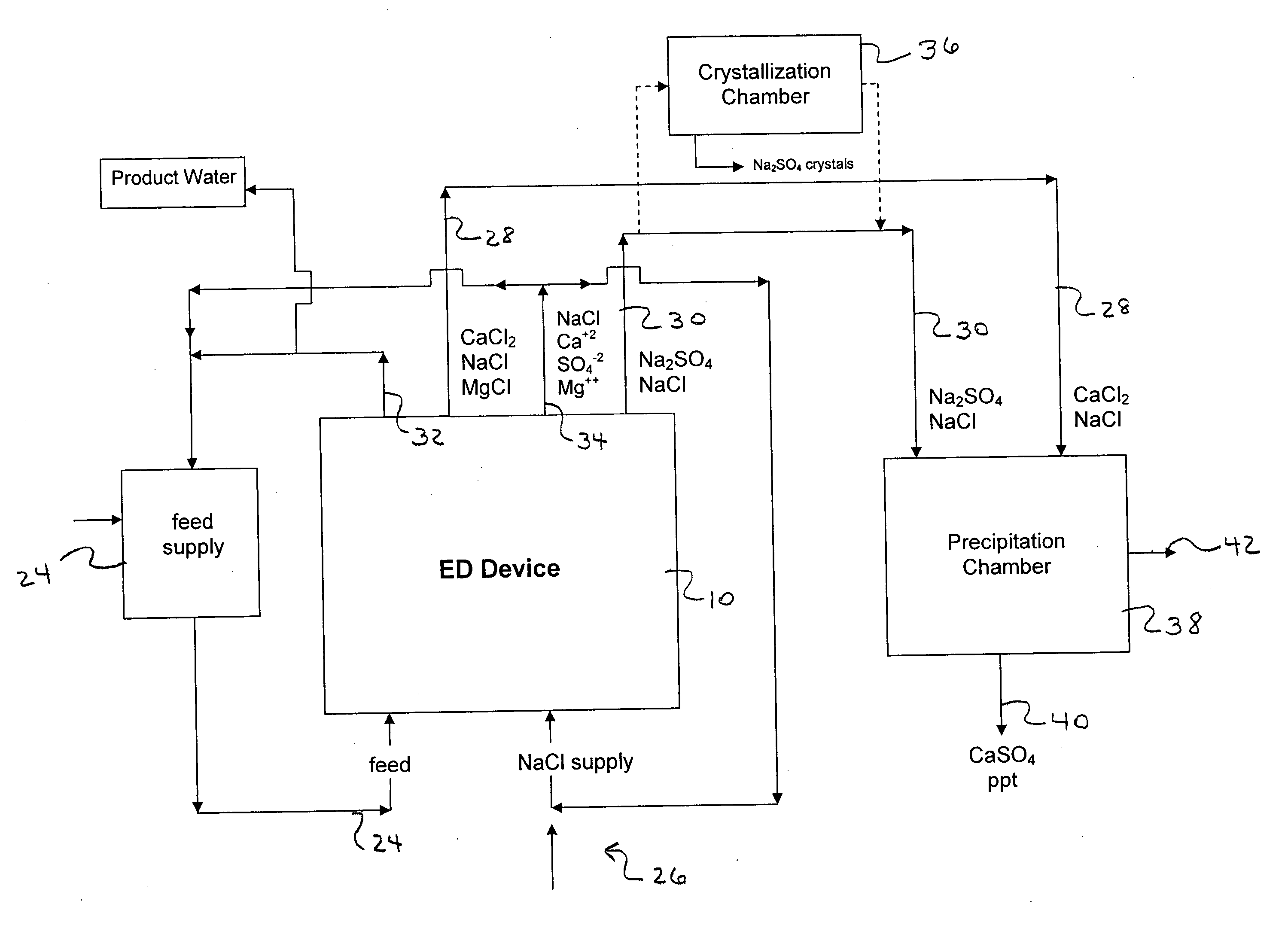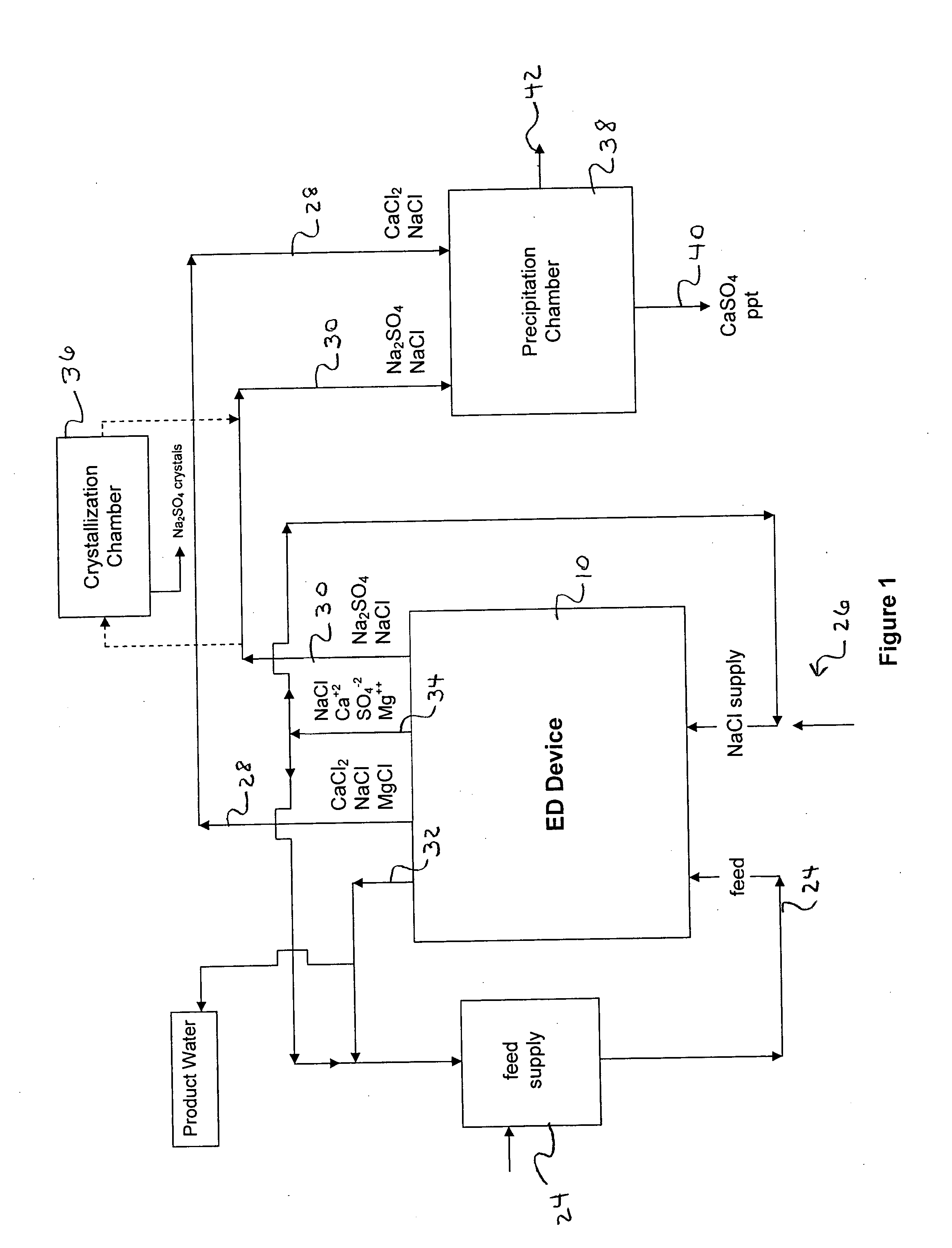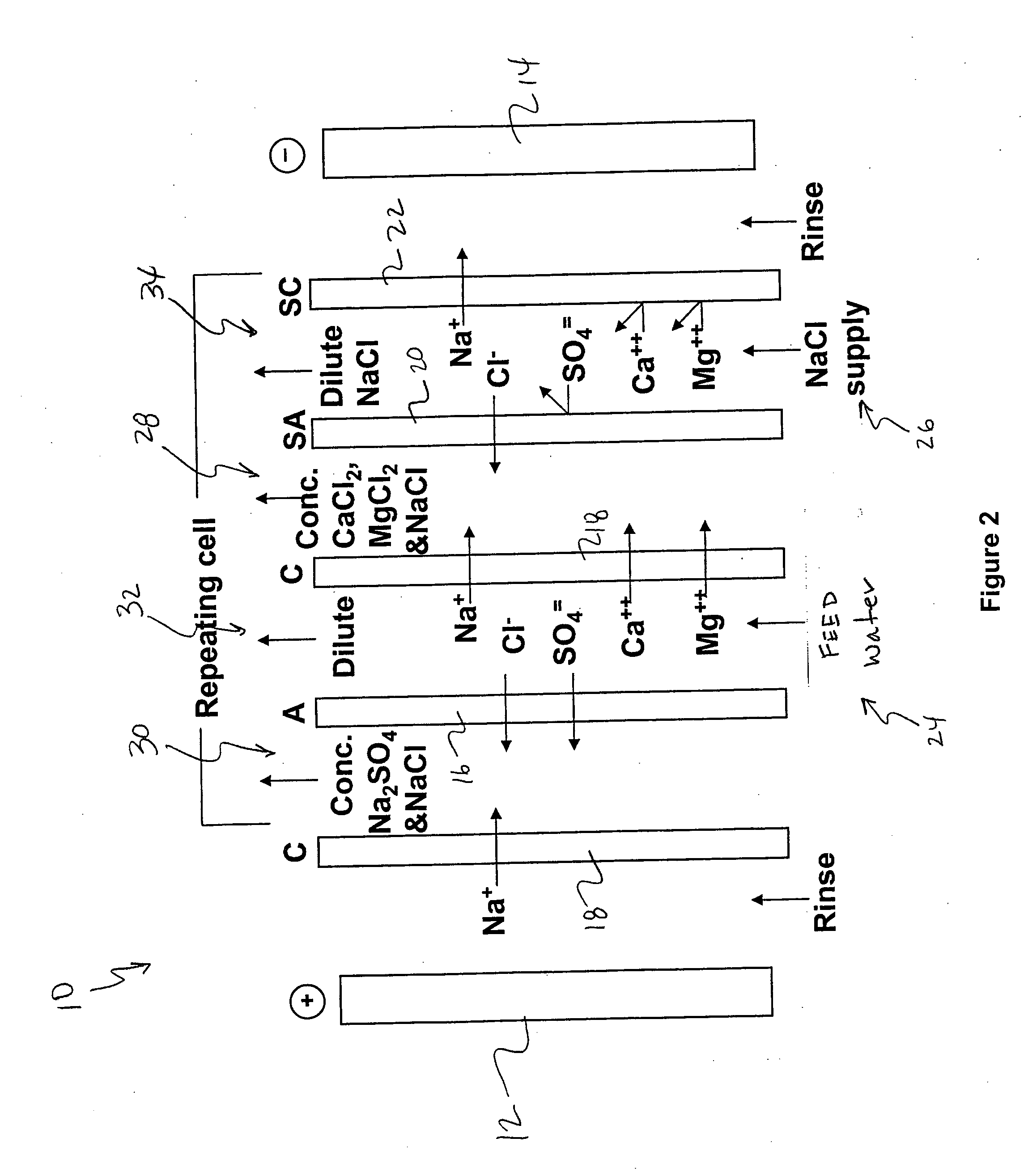Water desalination process and apparatus
a technology of water desalination process and water desalination apparatus, which is applied in the direction of liquid/fluent solid measurement, fluid pressure measurement, peptide measurement, etc., can solve the problems of longer start-up lead time, higher water cost, and increased strain on the world's fresh water supply
- Summary
- Abstract
- Description
- Claims
- Application Information
AI Technical Summary
Benefits of technology
Problems solved by technology
Method used
Image
Examples
example
[0106] The following is a prophetic example illustrating the use of a system made in accordance with the present disclosure as particularly illustrated in FIGS. 1, 2 and 3. Specifically, the following are estimated calculations using the system and process of the present disclosure in order to desalinate groundwater obtained from the Tularosa Basin in New Mexico.
[0107] The ionic composition of real brackish water is unlikely to be just NaCl and CaSO4. An example of real brackish well water is groundwater from the Tularosa Basin in New Mexico. A reported ionic composition of that water is shown in Table 1, first as milligrams per liter, then as milliequivalents per liter.
TABLE 1Treatment of Tularosa RO reject by ElectrodialysisIonHCO3−Cl−SO4=Na+Mg++Ca++totalFlowFeedwater analysis, mg / li27017013701141634202507Feedwater ions, meq / li4.434.7928.544.9613.4020.9638After lime softening, meq / li0.34.9929.724.9613.4016.6535RO feed neutralized, meq / li04.9930.024.9613.4016.65351000RO permeate...
PUM
| Property | Measurement | Unit |
|---|---|---|
| flow rate | aaaaa | aaaaa |
| specific gravity | aaaaa | aaaaa |
| specific gravity | aaaaa | aaaaa |
Abstract
Description
Claims
Application Information
 Login to View More
Login to View More - R&D
- Intellectual Property
- Life Sciences
- Materials
- Tech Scout
- Unparalleled Data Quality
- Higher Quality Content
- 60% Fewer Hallucinations
Browse by: Latest US Patents, China's latest patents, Technical Efficacy Thesaurus, Application Domain, Technology Topic, Popular Technical Reports.
© 2025 PatSnap. All rights reserved.Legal|Privacy policy|Modern Slavery Act Transparency Statement|Sitemap|About US| Contact US: help@patsnap.com



